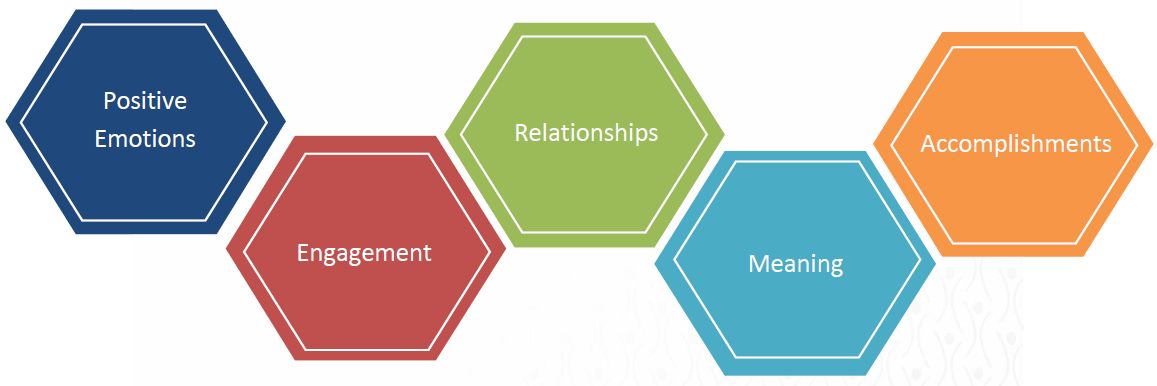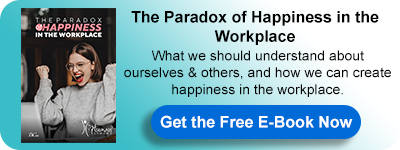The PERMA Model
The alarm rings persistently. It's 7 am on a sunny Monday. Dave and David, who happen to be roommates and friends since childhood, open their eyes. Dave stretches and yawns, spreading a smile on his face. He enthusiastically jumps out of bed, only to be hit with a perplexed look from David. Dave chuckles at David's confused look. He knows that zillions of question are running around his head, to have David finally break it out in his sleepy voice "I wonder what makes you that happy? It's not a field trip, you know". David's voice drags with disappointment.
Dave understands the reasons behind those questions. He tries to lower the excitement in his voice, "it's been a long weekend. I am off to meet my friends and discuss the project updates, plus, it's pasta Monday!". "Pasta Monday," David smirks in a sarcastic tone. David knows that Dave's office has a specialty for each day of the week, and today is Pasta. By the time Dave was almost done with getting ready, David was still in bed. His eyes stuck to the ceiling as he considered the idea of taking the day off, yet, knowing well he cannot do this today. He has an important meeting. Dave looked back at him. "It's 7:30; you're running late".
David heard Dave's remark. He felt like a pit in his stomach. His face twisted in pain." What's wrong?" Dave asked. David did not reply. He was lost in his agony. He dreaded meeting his colleagues. Negativity was all over the place. Everyone was in his silo, competing to keep their place. There was hardly any human connection. Moreover, David felt like he was losing himself. The projects he worked on were hardly of interest.
A few days ago, David’s manager asked him to start working on the company's website. The request left him feeling shocked because although David had some experience in that area, it was clear that he wanted his job in the company to take him somewhere different. He made it clear to his manager that he was not willing to work on websites from day one. Only to find this request after one year of being hired. Does his manager ever listen to him? Yes, his manager keeps promising him monetary bonuses and rewards. But this is not what he wants. If only he would allow him to do what he does best!
David was very good at organizing, had a talent for operations and logistics. His manager gave his colleague that job the day he gave him the website responsibility. Urghhh! David just wanted to scream. He tossed in bed. "You have to start moving," Dave yelled at the doorstep to hear a yell back, "I’m taking the day off." David stared at the wall in front of him, eyes wide open, a question buzzing in his head "how can someone be happy at work?".
How does it feel when you put those two words "Happy" and "Work" next to each other? Many people would argue the concept of "Happiness at work." Multiple reactions such as raised eyebrows, smirks, and confused looks only indicate an image about work: a place of torture and squashed dreams. However, "Work" where people spend most of their time and days, needs to be quite the opposite. A place where people flourish. A place where they connect, realize their dreams, learn and enjoy.
If it were in your hands, would you prefer your workforce to be full of Daves or Davids as on the narration above? The answer is obvious. Daves in the workplace brings passion, joy, productivity, and happiness. Yet, Daves do not just happen. Daves, are a result of hard work from management. Hard work that turns the workplace into a second home. A culture of happiness.
On International Week of Happiness at Work, let's uncover some possibilities that might help brighten up the workplace.
P.E.R.M.A Model
P.E.R.M.A model was developed by psychologist Dr. Martin E.P. Seligman. The Director of the Penn Positive Psychology Center and Zellerbach Family Professor of Psychology in the Penn Department of Psychology. He is also Director of the Penn Master of Applied Positive Psychology program (M.A.P.P.). The model represents five elements that are intrinsically motivating and that need to be present for well-being.

Research has shown apparent associations between the five elements of P.E.R.M.A. and how they reflected positively and significantly on physical health, vitality, job satisfaction, and overall satisfaction, in addition to commitment within organizations. (Kern, Waters, Alder, & White, 2014).
Moreover, P.E.R.M.A. not only increases aspects of well-being but also decreases levels of distress.1
1Melissa Madeson, A Theory of Wellbeing, 22/05/2021, Positive Psychology.com, Accessed 16 July, 2021, https://positivepsychology.com/perma-model/
For more about this topic, download our latest book "The Paradox of Happiness in the Workplace" for FREE:
